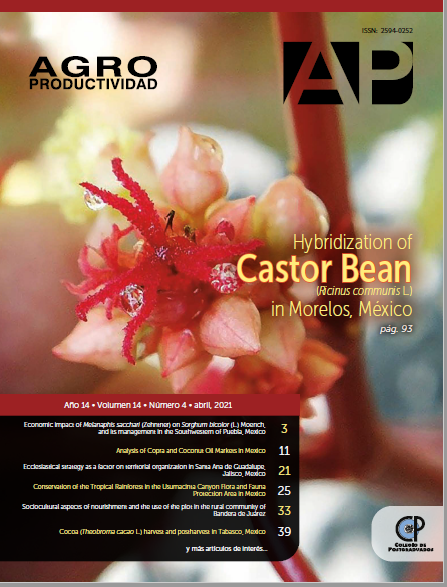In vitro Anthelmintic activity of Musa balbisiana Colla (Square banana) against Haemonchus contortus eggs IN VITRO ANTHELMINTIC ACTIVITY OF MUSA BALBISIANA COLLA (SQUARE BANANA) AGAINST HAEMONCHUS CONTORTUS EGG
Main Article Content
Keywords
Anthelmintics, Haemonchus contortus, Musa balbisiana, gastrointestinal nematode, bioactive plants.
Abstract
Introduction: Haemonchus contortus is the most frequent nematode in both temperate and tropical regions, induces large economic losses and has shown resistance to available anthelmintics. The objective of this study was to evaluate the anthelmintic activity of the aqueous and ethanolic extracts of Musa balbisiana Colla, against H. contortus eggs. Methodology: anthelmintic activity was evaluated using the egg hatching inhibition test. The aqueous extract of leaves, husks, roots was obtained by means of infusion and was later lyophilized. The ethanolic extract was obtained by maceration and later concentrated in a rotary evaporator. Spectroscopic, phytochemical, chemical and total polyphenol content analyzes were performed. The 50 % lethal concentration to inhibit hatching of H. contortus eggs was calculated by means of Probit analysis. Results: functional groups identified in the FT-IR analysis were: hydroxyl (-OH) and methyl groups (CH3). The proximal analysis revealed significant differences in the percentage of dry matter (P<0.05). No significant differences were found in protein content (P>0.05). The rates of egg hatching inhibition at a concentration of 4.8 mg/mL were 100 % for aqueous and ethanolic extract leaves, and 93.7 and 62 % for husks and root respectively. The LC50 against H. contortus eggs was recorded at 225 µg/mL and 481.7 µg /mL for aqueous and ethanolic extracts, respectively. The secondary metabolites detected were sterols, flavonoid and tannins in aqueous extract of leaves. Therefore, M. balbisiana extracts contained plant bioactive compounds with anthelmintic property against eggs of H. contortus.
Conclusion: with 225 µg/mL of LC50 and a confidence interval of 95 % between 33 y 418.4 µg/mL the aqueous extract leaves was the most active.

